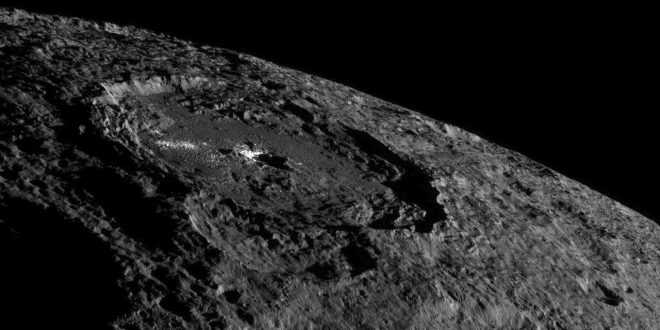This image of the limb of dwarf planet Ceres shows a section of the northern hemisphere. Prominently featured is Occator Crater, home of Ceres’ intriguing brightest areas.
This dramatic new view from NASA’s Dawn spacecraft was taken October 16, 2016 from Dawn’s fifth science orbit, about 920 miles (1,480 km) above Ceres. Since arriving at Ceres in March 2015, Dawn has shifted between various orbits to give us amazing views of this little world. It reached this new orbit in early October. In this image, the angle of the sun was different from that in previous orbits.
This image shows the famous bright spots in Occator Crater on Ceres. There’s a central bright region and secondary, less-reflective areas, prominent near the limb, or edge, of Ceres in this image. NASA said:
At 57 miles (92 km) wide and 2.5 miles (4 km) deep, Occator displays evidence of recent geologic activity. The latest research suggests that the bright material in this crater is comprised of salts left behind after a briny liquid emerged from below, froze and then sublimated, meaning it turned from ice into vapor.
The impact that formed the crater millions of years ago unearthed material that blanketed the area outside the crater, and may have triggered the upwelling of salty liquid.
Agencies/Canadajournal
 Canada Journal – News of the World Articles and videos to bring you the biggest Canadian news stories from across the country every day
Canada Journal – News of the World Articles and videos to bring you the biggest Canadian news stories from across the country every day



